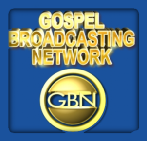

Services
Sunday A. M. Bible Study -
Sunday A. M. Worship -
Sunday P. M. Worship -
Wednesday Evening Bible Study -
Address
700 Mill Street
Mt. Vernon, Indiana 47620
Gospel Plan of Salvation
Hear -
Believe -
Repent -
Confess -
Be baptized -
Live faithfully -



A reading of the available restoration sermons suggests that the pioneer preachers were men who knew their Bibles. In those early days the brethren spoke extemporaneously as the audience liked to see a man "shoot without rest." Alexander Campbell was a generation ahead of his times as he employed the conversational style of presentation. He rarely made a gesture, and there was no beating of the pulpit, as he relied upon the power of truth as the means of informing, and persuading. It was common for a sermon to last for two to three hours. Having heard Campbell preach for the first time, "Raccoon" Smith commented to a brother Vaughn, "Is it not a little hard to ride thirty miles to hear a man preach thirty minutes?" "Oh," he replied, "it has been longer than that; look at your watch." When Smith looked at his watch he observed that Campbell had preached two hours and thirty minutes!
A striking contrast to the dignity of Alexander Campbell's style was the preaching of the unique "Raccoon" Smith. His sermons were characterized by boldness and humor. "Raccoon's" sermons were composed of three sections. The first part clarified misunderstandings of the restoration plea, the second division exposed the error of the times, and finally the three-
Reading a sermon, stated Campbell, "made one embarrassed as if he was corseted." He further commented on this point: "What apostle read to those gathered, his own sermons or one purchased from another? Would Peter have been speechless if one day his sermon had been misplaced in the saddlebag? Could Paul not have prayed with the Ephesian elders at Miletus if the written prayer in his pocket has been lost?"
CONCLUSION
These men of God in the main clothed the gospel in the fitting attire of fine grammar. Although there were numerous exceptions, these restorers had preference for expository preaching. For their illustrations they drew heavily from the Bible, nature and history. There was no string of "death bed stories." Those who looked for pepper, salt and vinegar were surprised to receive manna, wine and oil. There is a relevancy to Campbell's description of great preaching, "when Christ is the theme, Charity the tone, Clarity the route and Certainty the foundation ... In a world of human doubts the church bears the message of divine assurance."'
Frequently emotion was emphasized. On one occasion following a discourse by Walter Scott the audience was unable to rise and sing the invitation. Scott, under a brush arbor near Wheeling, West Virginia, was to raise the staid Alexander Campbell from his seat and Campbell shouted. "Glory to God in the highest." Moses K. Lard, preaching on the prodigal son story, painted the returned home scene so vividly that the worshipers turned to the rear of the auditorium to see if the prodigal was entering the door. Basically the sermons were free from a strong emotionalism.
Dabney Phillips (Deceased), Bible Light, July-


